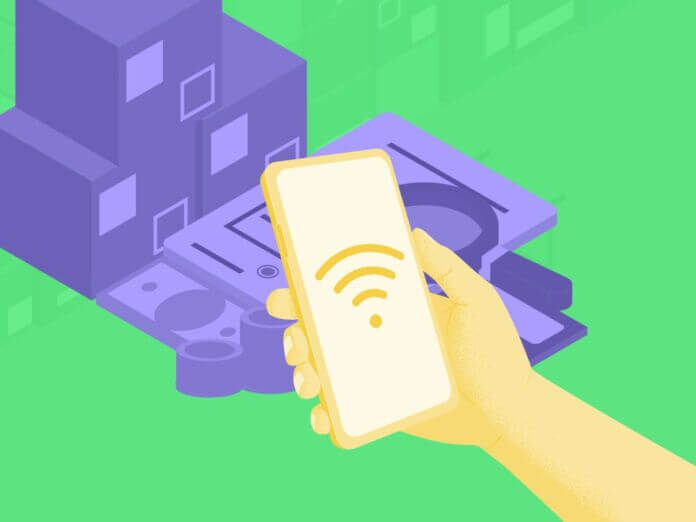
Devin Partida – October 11, 2024
Collected at: https://www.iotforall.com/streamlining-asset-management-with-iot
The Internet of Things (IoT) is revolutionizing asset management by providing real-time tracking, monitoring, and maintenance of physical effects. Businesses across various industries use IoT to automate inventory management, improve operational efficiency, and reduce downtime. By integrating smart sensors, RFID tags, and other IoT devices, companies can make data-driven decisions that boost productivity and save costs.
Explore how IoT is transforming asset management, the challenges involved, and best practices for implementing these technologies.
Real-Time Tracking and Monitoring
One of IoT’s most significant asset management benefits is real-time tracking. With smart sensors and RFID tags, businesses can continuously monitor their properties’ location, condition, and status.
For example, embedded smart sensors can track temperature, humidity, and vibrations to ensure machinery or goods remain in optimal conditions. RFID tags provide automated inventory management, allowing companies to scan and locate items instantly, reducing the chances of misplaced or lost products.
Real-time monitoring enables businesses to keep an accurate record of all their resources, leading to fewer human errors, lower labor costs, and improved property use.
Predictive Maintenance and Reduced Downtime
IoT also enhances asset management by enabling predictive maintenance, which reduces equipment downtime and prolongs the life span of equipment and other valuables. Smart sensors can detect wear and tear, alerting maintenance teams before a failure occurs. This proactive approach ensures that repairs happen before significant damage or downtime impacts business operations.
For instance, predictive maintenance can be used in industries such as manufacturing, where machine failure can lead to costly delays. IoT devices continuously monitor the performance of these machines, allowing businesses to address potential issues quickly and reduce repair costs.
Enhanced Operational Efficiency
Automating asset management processes with IoT technology leads to more efficient operations. IoT allows businesses to automate tasks like inventory counts, goods tracking, and performance monitoring. This benefit reduces the need for manual processes and minimizes errors.
IoT-powered systems can generate reports on asset health, performance, and utilization, helping decision-makers allocate resources more effectively. For example, an IoT system might show that certain machinery is underused, allowing companies to redistribute valuables to maximize efficiency.
Blockchain and IoT for Secure Asset Management
Blockchain technology complements IoT by providing a secure, transparent, and decentralized way to track asset data. When integrated with IoT, blockchain ensures all asset-related information — such as location, usage history, and maintenance schedules — is tamper-proof and easily accessible to authorized users. This process improves data integrity and boosts trust among stakeholders, especially in industries like supply chain management and logistics, where accurate tracking is crucial.
However, implementing blockchain alongside IoT can be challenging due to the complexity of integration and the need for scalable solutions. Businesses must ensure their systems can handle the increased data load while maintaining security and compliance standards.
IoT Integration Challenges
While IoT offers immense benefits, integrating it into existing systems presents some challenges and concerns.
Data Security
IoT devices generate vast amounts of data, making security a critical concern. Hackers could target IoT systems to access sensitive information or disrupt operations.
Best Practice: Implement strong encryption, regular software updates and multi-factor authentication (MFA) to secure IoT devices.
Scalability
As businesses grow, their IoT systems must scale to accommodate additional devices and data. This change can lead to performance issues or system overload without proper planning.
Best Practice: Design IoT solutions with scalability in mind by choosing flexible cloud platforms and modular architectures.
Interoperability
Different IoT devices and platforms may not communicate effectively with one another, especially when businesses use legacy systems alongside newer technologies.
Best Practice: Ensure that IoT devices and systems adhere to common standards and protocols so it’s easier to integrate new technologies with existing infrastructure.
Best Practices for IoT Deployment
To maximize the benefits of IoT in asset management, businesses should follow best practices during deployment.
Start Small
Begin with a pilot project to test IoT solutions on a limited scale. This strategy allows companies to identify challenges and refine their approach before scaling.
Prioritize Security
Invest in robust cybersecurity measures to protect IoT systems from potential attacks.
Leverage Data Analytics
Use IoT-generated data to gain insights into resource performance and identify areas for improvement. Advanced analytics tools can help businesses make more informed decisions about asset management strategies.
Collaborate With Experts
Work with IoT specialists and technology providers to ensure the smooth integration of IoT solutions with existing systems. Expert guidance can address technical challenges and ensure businesses get the most out of their IoT investments.
Unlocking IoT’s Full Potential in Asset Management
IoT is transforming asset management by providing real-time tracking, predictive maintenance and improved operational efficiency. Through smart sensors, RFID tags and integration with blockchain technology, IoT offers businesses powerful tools to enhance management practices.
However, to fully harness IoT’s potential, companies must address data security, scalability and interoperability challenges. Following best practices and taking a strategic deployment approach can help unlock IoT’s full value in asset management.

Leave a Reply